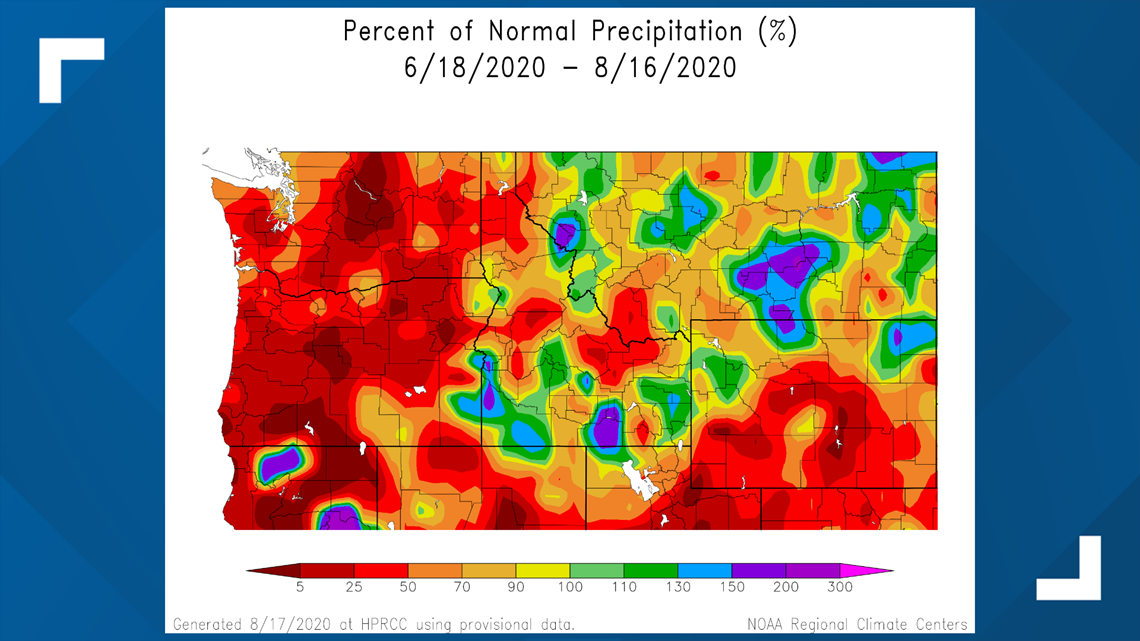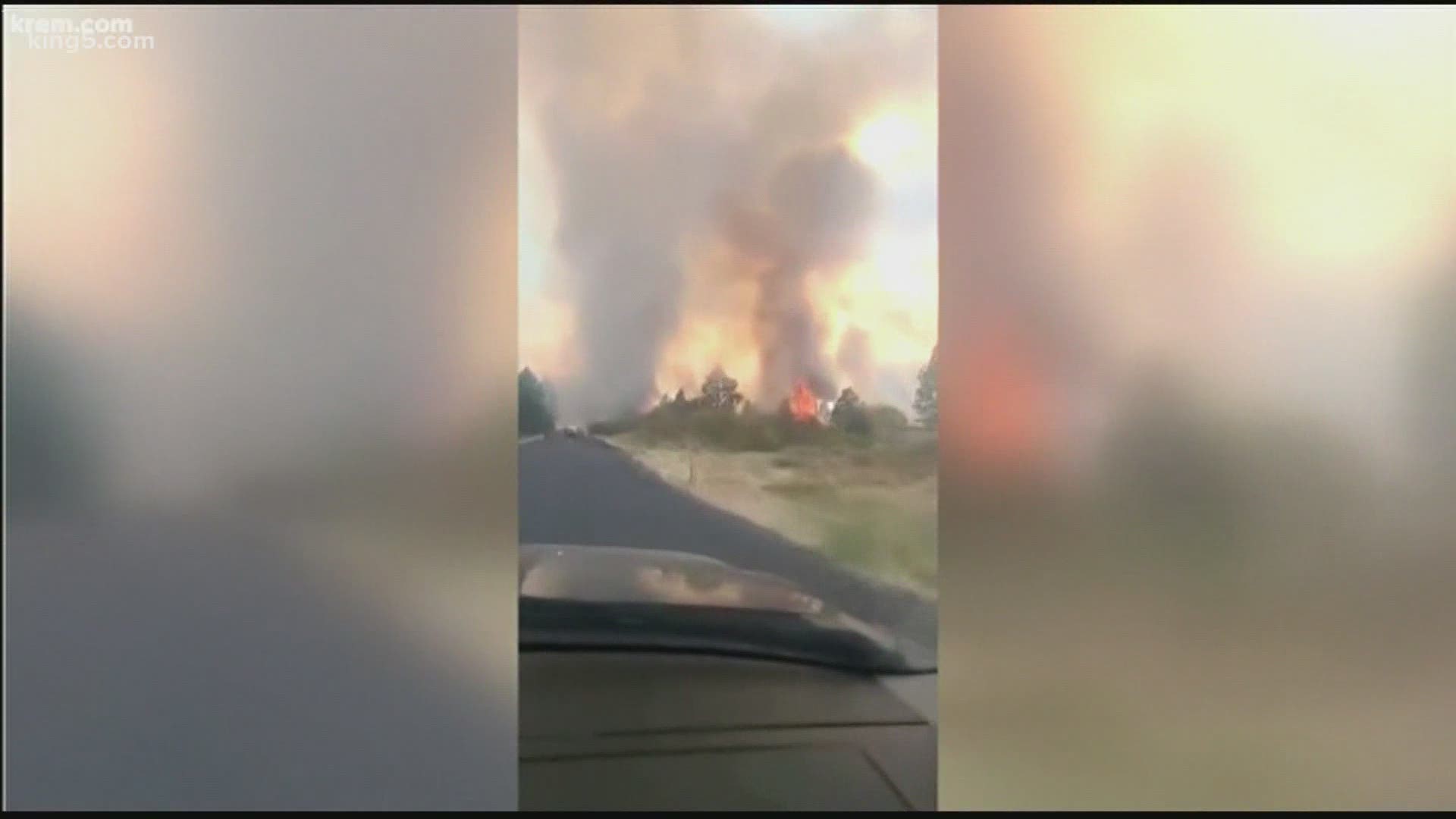High heat, along with an unusual tropical weather system heading north, helped kick off what is normally the toughest stretch of Washington state’s fire season.
The strange part is the remnants of a tropical cyclone that worked its way up through California to the Pacific Northwest, bringing lighting and some rain.
“That is very unusual, for the pattern for us to have with a major heatwave with air coming up from the south,” said Nick Bond of the University of Washington who serves as the state’s climatologist. “It’s why it’s been so sticky at night, too.”


From California to Washington state, heat, dry lightning and hot temperatures contribute to a brutal weekend on the West Coast, as new fires break out from Los Angeles to nearly the Canadian border.
Paine Field in Everett hit 100 degrees. Death Valley California hit 130 —expected to rank as the hottest recorded temperature there in 107 years.
Sunday afternoon and evening brought unexpected lighting, along with little rain to the Cascade Mountains and both sides of the state.


Despite 110 lighting strikes, the Department of Natural Resources said a new fire on the Yakama Reservation was likely started by humans.
But late Monday, the National Park Service reported that Sunday's lightning strikes started at least 10 fires throughout the Olympic National Park and the Olympic National Forest, ranging in size from a half-acre to 1.5 acres.
The North Brownstone 3 fire stands at 2,000 acres and zero containment as of Monday afternoon.
“I think what we’re seeing — certainly in Oregon and California is it’s starting to heat up — the fires are starting to increase. We’re starting to see the same thing in our state,” said Hilary Franz, Commissioner of Public Lands.
Franz leaders the state Department of Natural Resources which serves as the largest firefighting agency in Washington.
Franz said the firefighting efforts are also complicated by COVID-19. DNR reports that one firefighter is currently infected, putting 14 others off the line and in quarantine as the season gets busier.
Franz said the warm and dry spring brought numerous smaller fires. A number of fires from escaped debris burning with more people staying home and working on their property because of the pandemic.
But now the fires are starting to claim thousands of acres in the south-central and eastern part of the state. Western Washing also has dry fuels and high temperatures, which are expected to cool somewhat later in the week.
“All of those are things that give us concern and caution for the days and weeks ahead,” Franz said.

